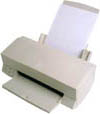The Collective Noun
Recognize a collective noun when you find one.
Nouns name people, places, and things. Collective nouns, a special class, name groups (which are things) composed of members (usually people).
Review the chart below:
Collective Nouns army
audience
board
cabinet
class
committee
company
corporationcouncil
department
faculty
family
firm
group
jury
majorityminority
navy
public
school
senate
society
team
troupe
Use the right verbs and pronouns with collective nouns.
Each noun from the list above is a single thing. That thing, however, is made up of more than one person. You cannot have a committee, team, or family of one; you need at least two people to compose the unit.
Because people behave as both herd animals and solitary creatures, collective nouns can be either singular or plural, depending on context. In writing, this double status often causes agreement errors. How do you tell if a collective noun is singular or plural? What verbs and pronouns do you use with the collective noun?
Members of the Collective Noun Acting in Unison
Here is the key: Imagine a flock of pigeons pecking at birdseed on the ground. Suddenly, a cat races out of the bushes. What do the pigeons do? They fly off as a unit to escape the predator, wheeling through the sky in the same direction.
People often behave in the same manner, doing one thing in unison with the other members of their group. When these people are part of a collective noun, that noun becomes singular and requires singular verbs and pronouns.
As you read the following examples, notice that all members of the collective noun are doing the same thing at the same time:
Every afternoon the baseball team follows its coach out to the hot field for practice.
Team = singular; follows = singular verb; its = singular pronoun. (All members of the team arrive at the same place at the same time.)
Today, Professor Ribley's class takes its 100-item midterm exam.
Class = singular; takes = singular verb; its = singular pronoun. (All members of the class are testing at the same time.)
The jury agrees that the prosecutors did not provide enough evidence, so its verdict is not guilty.
Jury = singular; agrees = singular verb; its = singular pronoun. (All members of the jury are thinking the same way.)
Members of the Collective Noun Acting as Individuals
Now imagine three house cats in the living room. Are the cats doing the same thing at the same time? Not this group! One cat might be sleeping in a laundry basket full of clean clothes. Another might be grooming on the sofa. A third animal might be perched on the windowsill, watching the world outside. There is one group of animals, but the members of that group are all doing their own thing.
Members of collective nouns can behave in a similar fashion. When the members are acting as individuals, the collective noun is plural and requires plural verbs and pronouns.
As you read the examples below, notice that the members of the collective nouns are not acting in unison:
After the three-hour practice under the brutal sun, the team shower, change into their street clothes, and head to their air-conditioned homes.
Team = plural; shower, change, head = plural verbs; their = plural pronoun. (The teammates are dressing in their individual outfits and leaving in different directions for their individual homes.)
Now that the midterm exam is over, the class start their research papers on famous mathematicians.
Class = plural; start = plural verb; their = plural pronoun. (The students are beginning their own research papers—in different places, at different times, on different mathematicians.)
The jury disagree about the guilt of the accused and have told the judge that they are hopelessly deadlocked.
Jury = plural; disagree, have told = plural verbs; they = plural pronoun. (Not everyone on the jury is thinking the same way.)
Changing to a Clear Plural if Necessary
If you cannot determine whether a collective noun is singular or plural, exercise your options as a writer. You have two ways that you can compose the sentence without accidentally causing an agreement error.
One option is to insert the word members after the collective noun. Write jury members, committee members, board members, etc.
Another option is to use an entirely different word. Choose players instead of team, students instead of class, soldiers instead of army, etc.
Both options will require—without debate—plural verbs and pronouns.
©1997 - 2025 by Robin
L. Simmons
All Rights Reserved.
